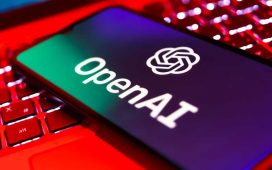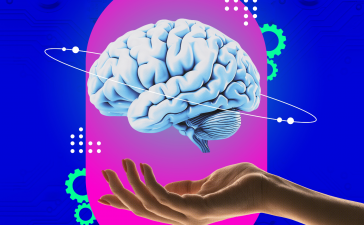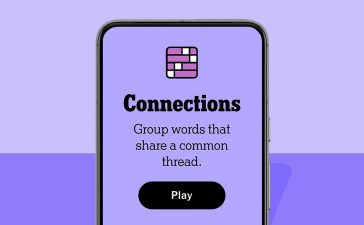Low-code and no-code platforms have already played a vital role in helping business users build their own software applications with little or no knowledge of coding. Use of these platforms, though, will reach a tipping point as generative AI is added to them, supercharging the use of low-code and no-code systems among business users who are not expert programmers, and possibly leading to an entirely new class of development tools, according to a wide range of industry insiders.
Professional developers have already started experimenting with ChatGPT and software development. While early results show that ChatGPT can be helpful — including for reviewing code — developers programming complex applications will likely never be able to entirely offload coding to AI tools. Generative AI, however, is poised to revolutionize use of low-code and no-code development environments, analysts said.
“Generative AI will have nothing short of a transformative effect on low-code and no-code platforms by making it much easier for these platforms to provide useful functionality based on high-level requests from even citizen developers,” said Dion Hinchcliffe, principal analyst at Constellation Research.
The addition of generative AI to low-code and no-code platforms is a compelling proposition for enterprises — by lowering barriers to adoption of these systems and further empowering business users to create applications, it can speed up development cycles.
Natural language processing for app development
The strongest offerings from low-code and no-code vendors will combine the benefits of visual developer interfaces with generative AI models, thus ideally allowing the user to choose between using natural language or dragging visual components to refine results, according to IDC research manager Michele Rosen.
“Generative AI can also produce text and multimedia assets for developers. And no-code and low-code vendors can provide chat interfaces to help assist developers throughout the app creation process,” Rosen said.
Microsoft’s low-code offering, Power Apps, already provides ChatGPT-based functionalities after the addition of Copilot, including a chat interface that allows for the creation of a simple application via a chat interface.
The resulting application can also contain an instance of ChatGPT for its end users, said Ryan Cunningham, vice president of Microsoft Power Apps.
“Addition of generative AI to Copilot serves two use cases: one is to help speed up development cycles and the other is to add generative AI to the applications created,” Cunningham said.
Microsoft’s Power Apps, according to Cunningham, uses the natural language processing aspect of generative AI to empower business users.
“The generative AI capabilities give business users the power to create applications. These users know what they would need in an application for their respective business departments but didn’t study computer science or coding,” Cunningham said. Microsoft is an investor in OpenAI, the creator of ChatGPT.
Lowering the barrier to low-code tools
Generative AI’s integration into low-code and no-code platforms will lower the barriers to adoption of these development environments in enterprises, agreed John Bratincevic, principal analyst at Forrester.
“The integration of generative AI will see adoption of low-code by business users, since the learning curve for getting started on developing applications will be even lower,” Bratincevic said.
The marriage of generative AI with low-code and no-code platforms will aid professional developers as well, analysts said. The help is needed — globally, the developer shortage, according to IDC, is expected to rise from 1.4 million in 2021 to 4 million in 2025.
“These generative AI coding capabilities will be most helpful for developers working on larger projects that are looking for shortcuts to support commoditized or common sense requests,” said Hyoun Park, principal analyst at Amalgam Insights.
“Rather than searching for the right library or getting stuck on trying to remember a specific command or term, GPT and other similar generative AI tools will be able to provide a sample of code that developers can then use, edit, and augment,” Park said.
Autocode completion is already available
Companies including Microsoft and Amazon already offer autocode completion software in the form of Microsoft’s Copilot and Amazon CodeWishperer. Microsoft has already announced that a future version of Copilot will adopt OpenAI’s ChatGPT-4 technology — the next version of OpenAI’s GPT (Generative Pretrained Transformer), GPT-4.
AI technology, according to Forrester’s Bratincevic, will help developers learn new coding skills and approaches to program architecture.
Low-code platform provider Mendix is already working on integrating developer-guidance features into its development platform, said Amir Piltan, senior product manager of AI at the company.
“Developers can build applications based on best practices, provided as recommendations by the generative AI inside the development environment within Mendix,” Piltan said.
Along with added advantages for enterprises and developers, the integration of generative AI to low-code and no-code platforms could result in an immediate revenue surge for vendors, according to Amalgam’s Park.
“The immediate opportunity is to grow the user base capable of contributing to low-code app development efforts by five to 10 times, by simply typing requirements and creating low-code snippets that can be used by more senior developers,” Park said, adding that this could double the low-code market in the next 18 months to two years.
Amalgam Insights estimates that the low-code app development market is roughly around $10 billion globally, which represents less than 10 million users with some level of app writing or editing access. In comparison, ChatGPT already has over 100 million users.
Both Microsoft and Mendix expect adoption of their platforms to grow and said that their enterprise customers are looking forward to using new generative AI capabilities.
Challenges to generative AI in low-code development
While there are multiple advantages for enterprises to use low-code and no-code platforms with generative AI capabilities, there will also be challenges. The use of natural language prompts will take some getting used to — there are techniques involved in doing it well — and generative AI may give rise to legal and security issues.
“It can be challenging to prompt the model to produce exactly what the user wants. In contrast, the drag-and-drop tools in no-code and low-code development tools can be faster and easier to use,” IDC’s Rosen said.
In addition, the use of models such as GPT could lead to legal concerns due to multiple issues such as data lineage and intellectual property rights, according to Park.
“Put bluntly, GPT doesn’t inherently know if it is using copyrighted or patented processes as it autocompletes responses. And using GPT is not a valid legal excuse for bringing patented and unlicensed code into an application,” Park said, adding that this may cause developers to check code for infringement, and thus hinder the potential of these platforms to cut down development times. GitHub, which uses ChatGPT in its own version of Copilot, is already facing a class action lawsuit challenging the legality of the technology.
AI raises questions about enterprise data security
Further, to take full use of the generative AI aspects of low-code and no-code platforms, enterprises would have to train them on their in-house data sets. Once the platforms are in use by business users, the platforms would then presumably continue to require access to the data sets.
“Enterprises will have to figure out how to secure the data with role-based access, which may not be easy to do in foundational AI models. So the data security and governance required for generative AI will almost certainly be trickier and require more sophisticated solutions,” Constellation’s Hinchcliffe said.
Additionally, developers would need to train the foundational models used in the no- code and low-code platforms to prepare them for general use in an enterprise, and so the developers themselves might need additional training in order to do so, Bratincevic noted.
The birth of a new class of development platforms?
Ultimately, the capabilities of generative AI could lead to the birth of a new class of developer technology, analysts said. Natural language processing could be refined to the point where, for example, the drag-and-drop interfaces used by current low-code and no-code platforms could become unnecessary.
“Generative AI will also be a major competitor to the current low-code and no-code players. We are seeing new generative AI coding solutions growing quite rapidly,” Hinchcliffe said.
IDC’s Rosen noted that vendors who can provide tools that add value to raw generative AI output, either by incorporating it with other technologies or by aiding the user to prompt the model effectively (and thereby reduce costs), will have an opportunity to attract users given the extremely high level of interest in this technology.
In the meantime, use of no-code and low-code platforms is growing rapidly. Constellation Research’s early analysis indicates that the market for generative AI for application development will be $4.1 billion by the end of 2023, growing at approximately 32% a year.
The AI providers that stand to gain the most
Despite the possibility of the rise of a new class of no-code and low-code tools, most analysts believe that Microsoft, Google and Amazon could all stand to gain from the addition of generative AI to low-code and no-code platforms.
Microsoft, according to Bratincevic, could come out ahead of the others.
“Microsoft made early investments into generative AI and is ahead of the low-code competition. Also, Microsoft is already the number one low-code platform in enterprise adoption and is commonly made available to all employees inside an enterprise (like Office tools) — these factors will combine to disproportionately aid Microsoft over other vendors,” Bratincevic said.
Microsoft Power Apps, according to Cunningham, sees at least 7.4 million new builds on its platform every single month.
The demand for generative AI capabilities inside low-code platforms will also see acquisitions in the intelligent developer technology market , Park said.
“I would expect the most successful generative low-code platforms to be acquired over time by larger vendors seeking to manage the application development lifecycle,” Park said.
Copyright © 2023 IDG Communications, Inc.












